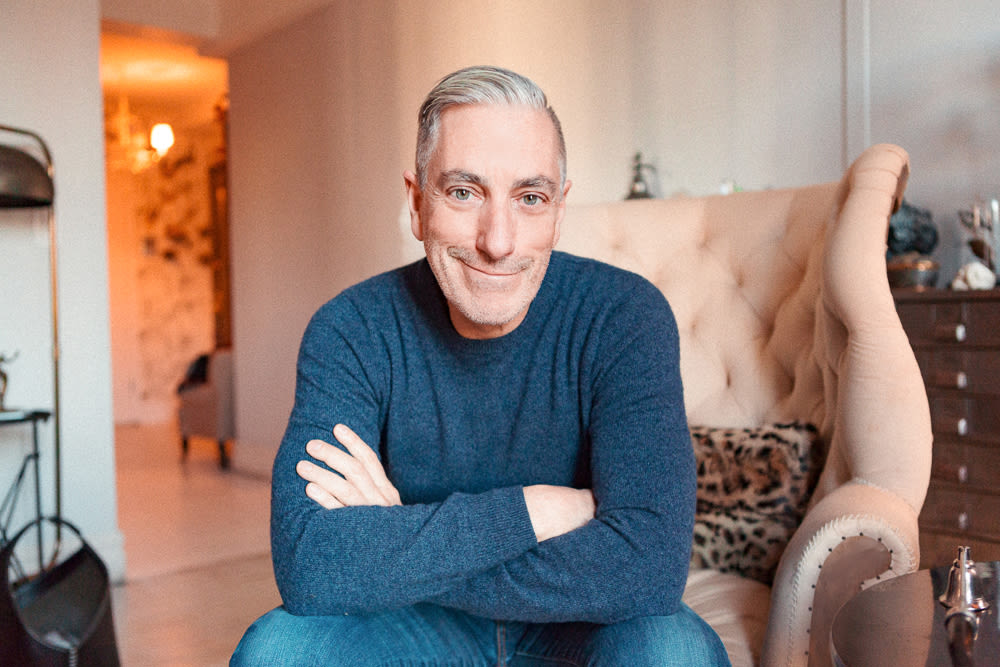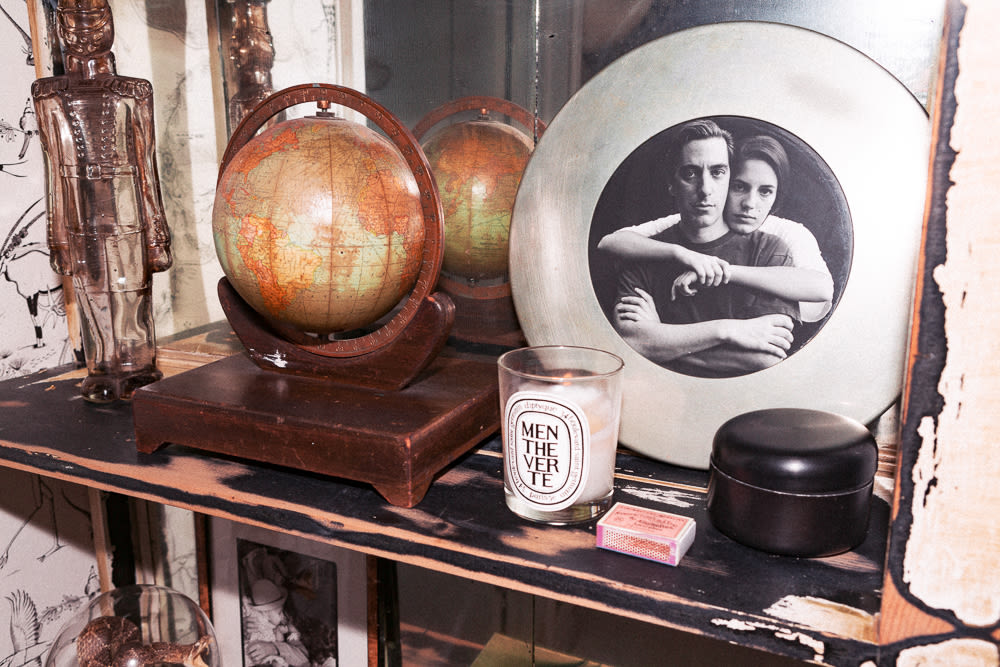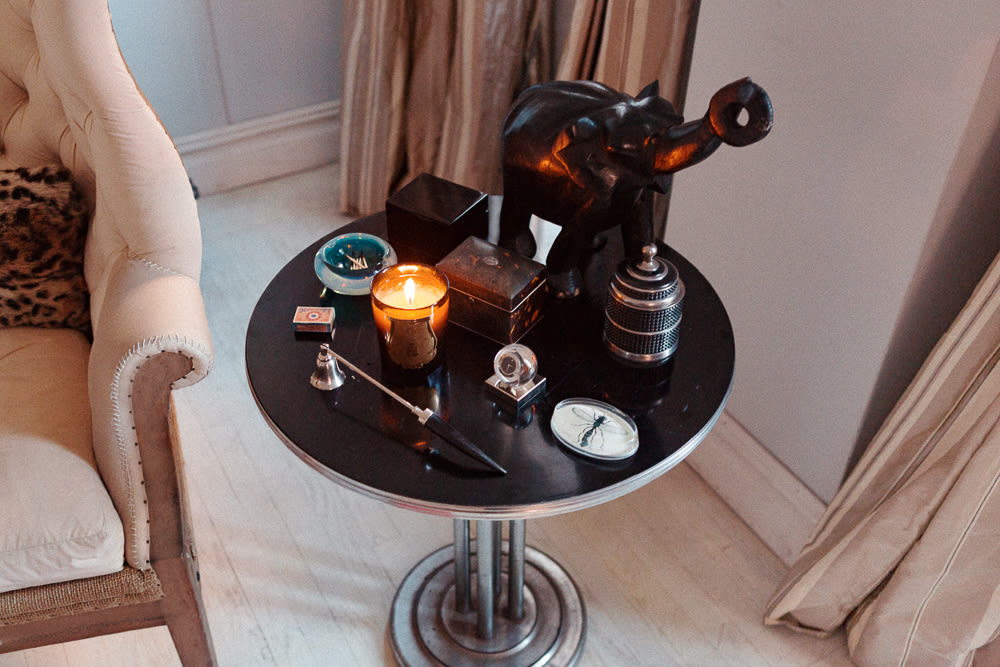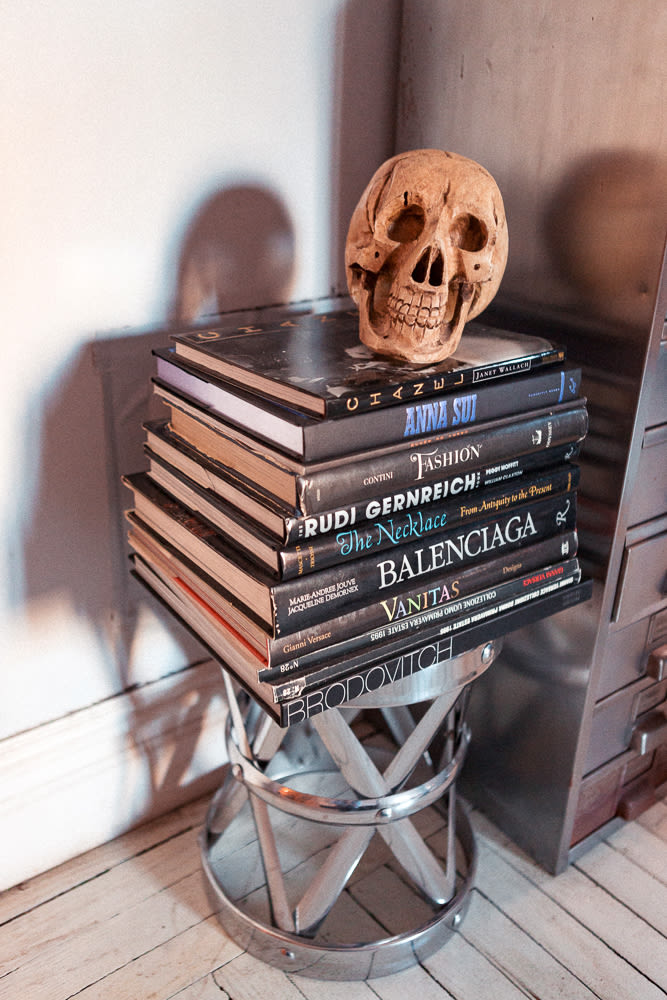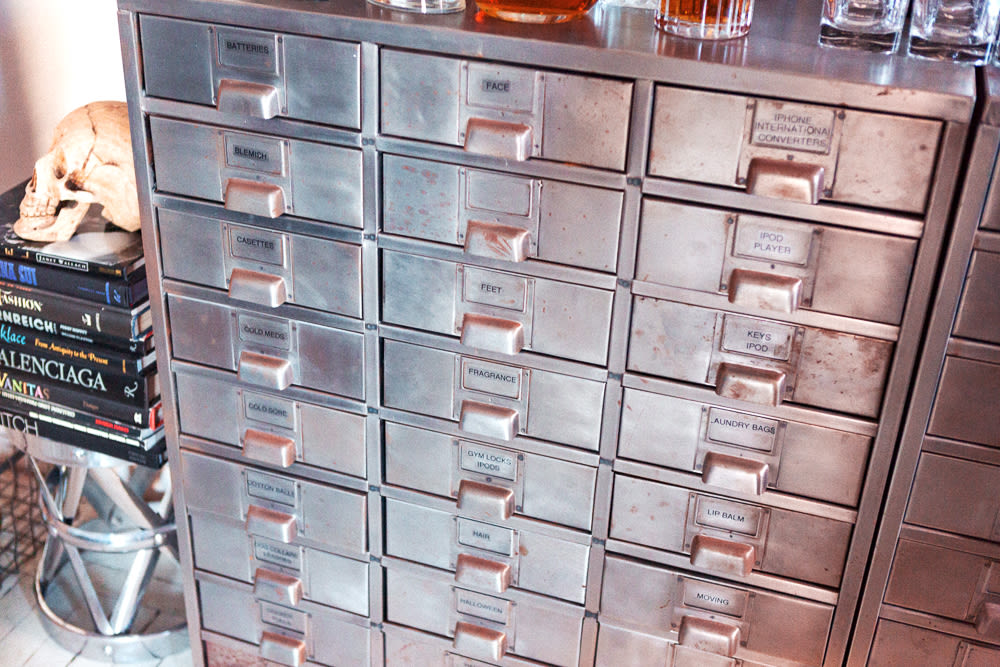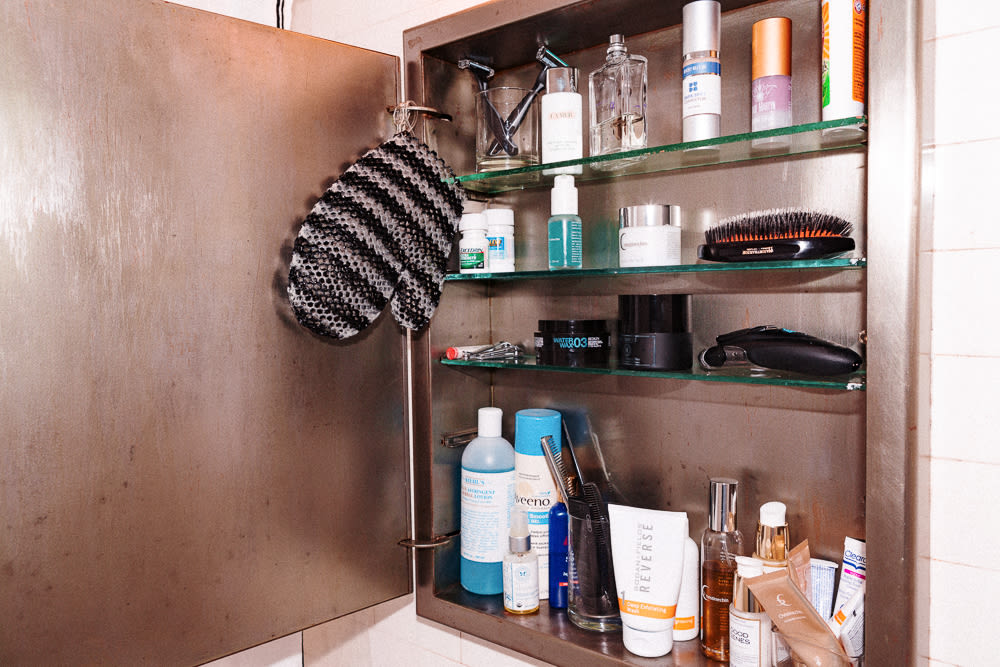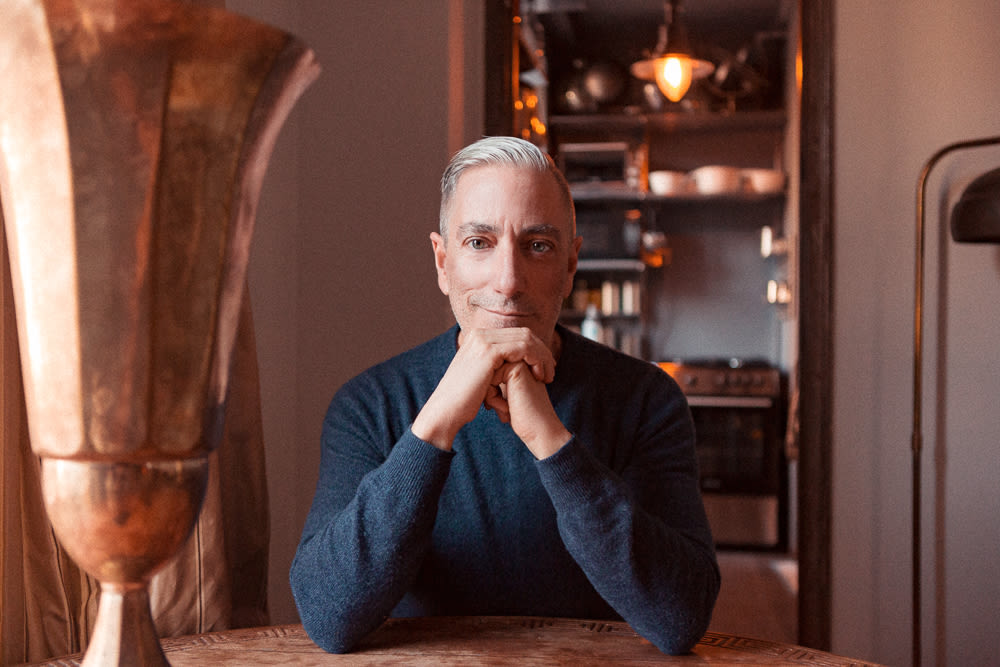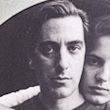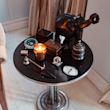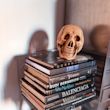"I grew up in the Bronx, in Hunts Point by the meat market. My grandparents are from Spain and Cuba, but my mom is from New York and my dad is from Jersey—he owned a bodega. And my mom worked for a glue company selling glue to schools. My parents didn’t have a lot of money, we didn’t get fashion magazines or anything. We looked at Good Housekeeping or Family Circle, and my sister got whatever the equivalent of Tiger Beat was. When I was about 15, my friends started to get Seventeen. That was when I started to see fashion.
Seventeen was beautiful back then. It was a lot of men’s clothes, actually—you would see how the Beatles dressed, and the Rolling Stones, and Jimi Hendrix. Janis Joplin, too, and Joni Mitchell. That’s kind of when I started to think about clothing. I’m a child of the hippie ‘60s. Fashion was interesting to me and my friends because we didn't like the way everyone else dressed. We were wearing bell-bottoms because we didn’t want to look like our parents, and our parents said we weren’t allowed to wear them. I was looking at clothes as a reaction to what was going on.
At 16, my main interest was smoking pot. [Laughs] My grandchildren are going to hate that. My family was living in Queens at the time, and I thought I wanted to go to college because I didn’t want the life that my parents had. I thought I would become a teacher because I was a good reader! Or my friend’s dad was an airline pilot, so I thought I would do that. I was just trying to figure out ways to get out. I had very nice parents, and my life was fine. I was just seeking something, and I didn’t know what it was. I think it’s part of being young.
Well, I got sidetracked and didn’t go to school. Instead I became a Buddhist, because that’s what you did in the ‘60s and ‘70s. Everybody was into transcendental meditation. And the Beatles did it! A friend of mine started these chants, and I thought that would be a good thing to do—you know, you can go chant for what you desire. I did that and I waited tables. I met this woman through the Buddhism thing named Kezia Keeble. She was probably the most glamorous thing I’d ever seen…5’10” and change, with waist-length black hair and a Saint Laurent see-through blouse. We got along really well. She was once a fashion editor under Diana Vreeland, but I wasn’t interested in that story at all. At the time she had a PR company, and I started writing her press releases. I wasn’t a good writer, but I could write fundamentally. Not flowery at all. Anyway, one of my press releases went to the editor of the Soho Weekly News—Soho at the time was just now up and coming—and she called up Kezia and told her that she really loved the press release, and she wanted me to cover menswear. I never wrote a press release again after that.
And that lead to the styling stuff. But we weren’t called ‘stylists.’ Back then, we had Sittings Editors. The reason they were called that was from the old days of magazines, when society women would come in and sit for photographers. Your job was to arrange clothes and then choose the outfits. There were no ‘freelance stylists.’ One of the first Sittings Editors was Julie Britt, who was the editor at Glamour until she left and started her own business doing sittings. And then photographers hired her. Meanwhile Kezia was doing that for Esquire, and one of the photographers she was working with was Bruce Weber. It was early in his career—back then, he was shooting real people for Esquire, not models or celebrities. So I started doing some modeling for him with a few other guys. For some of the shoots, I would help Kezia put together the outfits, and Bruce said, ‘He’s kind of good at this.’ He asked me to style these ads for him, and I had no fucking idea what I was doing, but he would help and teach me. He had all of these references, and he has great style… He would be like, ‘I want this to look like The Conformist.’ We didn’t have the internet, so I would go look it up. By this time, Kezia and I were married and living by Rizzoli on Fifth Avenue, and I would take my baby daughter and we would go there or to Brentano’s. She would be sleeping and I’d be reading books, looking at the images.
The styling process is this—you’re in the hair and makeup room together with the photographer and the artists. You have to figure out what you’re going to do, and you have to create something from kind of nothing. You have the clothes, but you have to think, ‘What am I going to impose on these? Who is this person going to be?’ Then you build a character—and every person in the shoot has something to do with that. It’s collaborative. The model collaborates, too. All the people I’ve worked with, I’m very close to. There’s a certain easiness between us.
So I started working with Bruce and Patrick Demarchelier. This is in ’76 and ’77, so pretty early in their careers. Then I started working with Richard Avedon—he was shooting something for GQ and needed a stylist, and the people at GQ recommended me. Being on set with Avedon was heaven. I mean, it was scary at first. I would be styling and he would say, ‘What’s the surprise?’ The surprise? What the fuck is he talking about? We were shooting shoes, and so I told him that the model was wearing mauve socks. The rest of the clothes were olive and drab, but I styled in these socks. Dick asks the guy to pull his pant leg up a little bit so you could see the sock, and that was the punch of the picture. With Avedon, there’s always something to delight you.
Steven Meisel was just starting out at this time too, and I worked on a few shoots with him at the very beginning of his career. He’s great. Steven has a lot of range. I thought I had a lot of range, too, until I was editing this book Stylist and these two other editors were going through my photos, deciding what to put in. The only things that ended up in the ‘Yes’ pile were nudes and bathing suits. So that’s my range. [Laughs] Michael Kors always laughs at me and says it’s so American to him. My style is very American—I have fantastical moments but they’re grounded in something. I like real people. Clothes are amazing and I love them, but to me, it’s always the girl or the boy. What do they look like? Are they beautiful? Are they fuckable? I never think about style—I think about subtext.
Kezia and I were working with Steven and Richard and Bruce, but Kezia wasn’t into it anymore. Art directors were calling us and asking us advice about photographers and models, and she was sick of giving away the info for free. So we started our own ad agency—full-service, so we’d do ads and press kits and everything visual. Kezia and I had divorced and she’d remarried John Duka, who used to write about fashion for the Times, so it was the three of us. Keeble, Cavaco, Duka—it’d be KCD later on. We started with Bergdorf Goodman with photos by Steven Meisel and illustrations by Mats Gustafson. And then Ivana Trump hired us to do Trump atrium, and we did all of these cartoons for them with Tim Schafer. KCD grew, and we started to work for designers. We were having a good time, until Kezia got breast cancer. John got sick, too, and they both passed away. It was me, Ed Filipowski, and Julie Mannion at KCD. I’m styling, they’re running the business.
About this time, I start working more with Madonna. Steven is doing a lot of her shoots and I’m styling them. Then Madonna approaches Steven about doing a book—the Sex book. So we do it, and Steven hires Fabien Baron from Italian Vogue. The book was hilarious beyond imagination, as you’d imagine a book about sex would be. I did all of the clothes, which was a mix between fetish clothes and fashion. If we think about it now we still laugh, it was so nutty. But we all worked beautifully together. Madonna is a workhorse—she came to work every day that we did it. We did it in three weeks, it was so good.
After Sex, Fabien told me about a job at Harper’s Bazaar. He said, ‘Paul, the train is stopping here, and it might not stop again for awhile. You can get on, or you can wait.’ I had KCD, but it was changing. And I was heartbroken over Kezia. I thought it might be time to make a change, so I called the editor, who was a friend, and asked if they needed a Fashion Director. He said they were getting Tonne Goodman, but also said we could do it together if we wanted to. That worked, because we were good friends—we even shared an office! The team at Bazaar really loved photographs and understood where we were coming from, so they let us do what we wanted. We did the Linda Evangelista cover, which was based on this Veronica Lake movie I Married A Witch. And Tonne did that Peter Lindbergh shoot where Amber Valetta is an angel, which was inspired by Wings of Desire and Angels in America. Everybody loved to work together. I was at Bazaar for four years. It felt like a really long time, but it was fast.
My dream was to be a Vogue editor, and I got the chance to work there after Bazaar. This was the be-all, end-all. I was there for three years and I did 36 covers—I did Gisele’s first cover, I styled Oprah... That was heaven. She wanted to do her own hair, but I told her she had to have the full Vogue experience. And she said OK. She would call me directly, no assistant, and I’d get so starstruck. I still do. When Madonna would call me, I’d start to laugh hysterically. Oh my God, I’m talking to Madonna! I’m 64-years old, and Emma Roberts will call me, and I’ll start to giggle. It tickles me.
I left Vogue in ’99, because Polly Mellen had left Allure and there was an open Creative Director job. I wanted to have a say in how things were laid out and the look of the magazine. Allure was struggling with their visuals at the time…the writing was great, but Linda Wells wanted help changing the look. I went in, and she gave me a lot of freedom. Unless she didn’t like it, and then we had to go into it. [Laughs] I’m obviously high-strung and a little bit opinionated. I want things to work out but I can also be talked out of it. I know who my boss is. Sometimes it just comes down to a difference of opinion. Allure is a beauty magazine, but we tried to make it more fashion-y. We tried to make it a little bit more cinematic. I don’t work there anymore, but I put in 16 years there and I loved it. Now I’m styling, doing different things, and I like that.
I worked with so many strong people during my career that I didn’t know if I had my own voice. Everyone else was so talented and so fabulous. I thought I was good, but just proficient—I’m a good workhorse and I’m nice. But that’s important, being able to work with brilliant people to conceive ideas. I’m sad that people think you can just go in the street and do it. They’re missing the craft of it. Watching Tonne Goodman, or Grace [Coddington], or Polly Mellen, the way they touch the clothes, the way they touch the girls, the reason they got those pictures is because there’s love. It’s not just dressing someone. It looks like we’re dressing, but it’s more than that. I know it’s not brain surgery. But there’s something beautiful about it."
—as told to ITG
Paul Cavaco photographed by Tom Newton at his home in New York on Feburary 29, 2016.
More career stories: Iman reflects on how modeling has changed since the '80s, Jennifer Starr remembers the first Pirelli Calendar she casted, and Yadim goes from humble beginnings to doing Vogue covers in The Professional.
